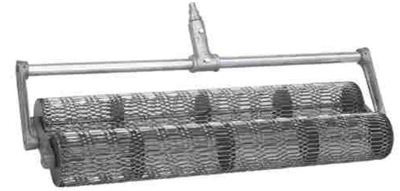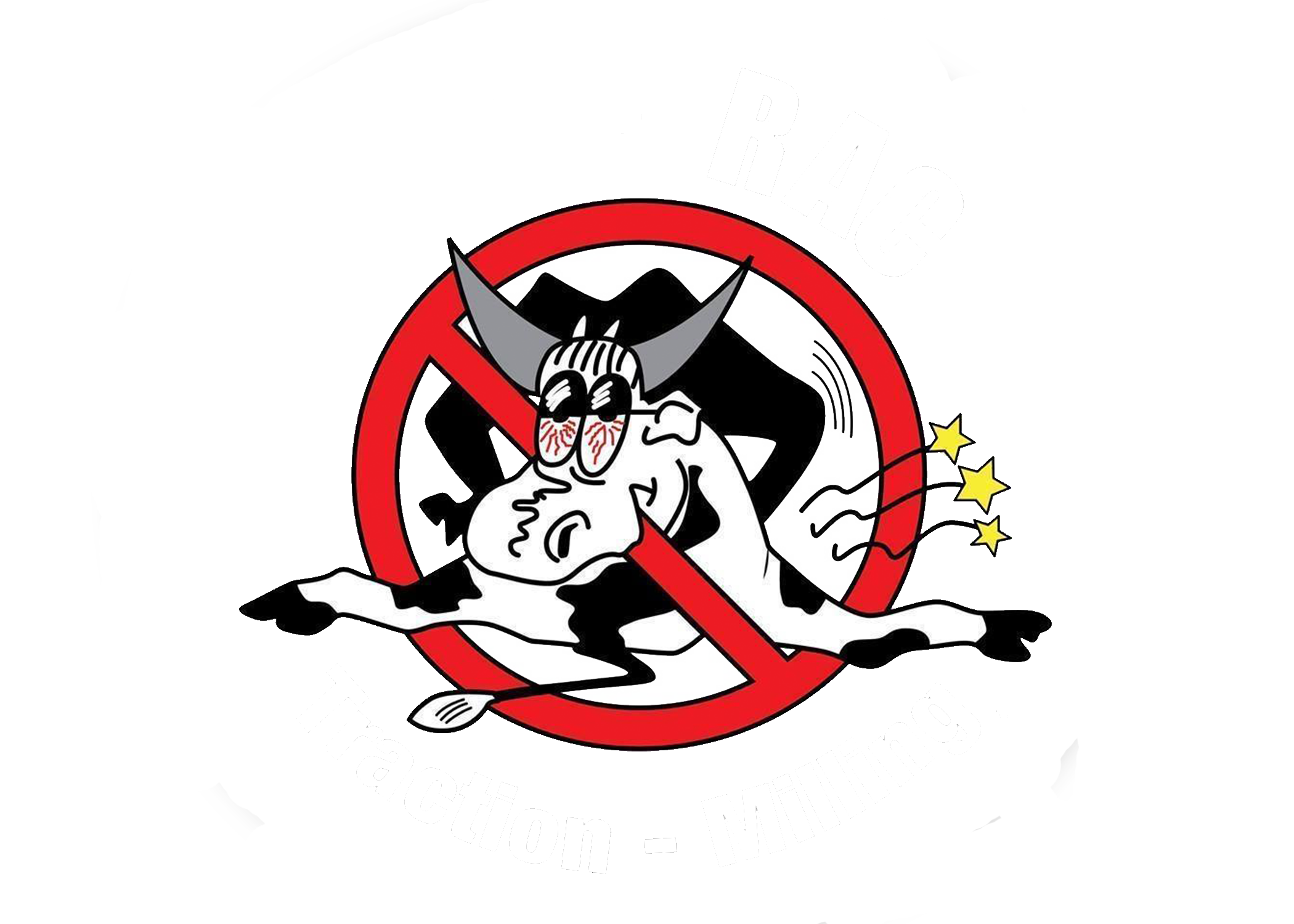Ready-mix concrete quality:
Some ready-mix companies use softer aggregate than others do. The aggregate used is every bit as important as the amount of portland cement used in a concrete mix. Depending on the area you live, types of aggregate used can range from soft limestone to crushed granite. Whatever is used, it must be “washed” materials so as to be free of clay and other impurities that prevent a good bond between the portland, sand and stones. Check with your local ready-mix supplier to verify this and attest to their quality.
Other additives:
Air entrainment: Well worth the extra few bucks per cubic yard/meter. This aids in the expandability of the slab in freeze/thaw environments, and also protects the concrete from the effects of acids from the manure.
Fiber mesh: This is a fibre additive that can be added to concrete (for a price) to give a slab a more durable surface when power-trowelled, such as mangers, center alleys, and milk house floors. Be aware though, that an additional cost may have to be added for a “plastisizer” if it is not included in the initial price, so it can be managed and leveled without adding extra water to the mix and weakening the product.
Contrary to some claims, it will not replace the strength provided by wire mesh or re-bar in areas of thin concrete or unstable base. In the application of scrape alley floors and free-stall pads, it provides very little benefit.
Wire mesh: In the case of a wet or unstable base or expected heavy equipment traffic, wire mesh is a reasonably priced addition with great advantages to reducing shifting and cracking. In a tie-stall barn on the cow-stand, if welded or securely clamped together and grounded, can reduce transient voltage problems where the cows are milked. The tie-stalls themselves and water lines must also be connected to this mesh and ground rod to gain the full benefits. Talk to your electrician before pouring.
Placement:
Pouring concrete is not rocket science, but it is all about timing and is labour intensive. Be sure your contractor does not over pour his crew’s capacity to keep ahead of the finishing of the slab. Make sure that your contractor has experience in pouring agricultural facilities. Many a residential builder has ended up in over his head on a job he’s not equipped or experienced in, just because he was the lowest bidder.
Adding Water:
Some contractors will add too much water to the mix so as to make the concrete “find it’s own level”, and reduce the labour to get it to grade. To maintain the purchased strength of the concrete, it should not be poured with a greater “slump value” than four and a half to five inches unless a plastizer has been added. If your contractor doesn’t know what this all means, find another one, FAST!
Finishing:
Power trowelling: Some contractors will explain that by power trowelling the surface, you can raise the strength of the surface of the floor by up to 500 psi. thus creating a more “durable” surface. It may be more economical to order the next higher strength concrete so as to get the same 500 psi more strength throughout the entire slab, not just the surface. Power trowelling will also negate the advantages gained by air-entrainment additives in regard to freeze/thaw, and acid resistance of the concrete.
Texture:
If you opt for a power-trowel finish, you now have a surface unsuitable for livestock and have to spend more money to re-modify it so as to get acceptable traction for the animals to prevent injury due to slipping and falling. This is why “grooving” in new barns is so prevalent. This will cost anywhere from 65 cents to $1.50 per square foot, depending on what pattern you want, and where you live. If you decide to go with grooving, be sure to include your floor area into your manure storage capacity plan. A diamond pattern grooved floor holds well over a gallon of manure every 10 square feet. (5’X 2’) A barn with 10,000 square feet of floor will hold an extra 1,000 gallons of manure when scraped off “clean.” This also makes it very hard to control bacterial infections of the cow’s hoof.
The “slip and catch” action of the hoof on the grooves also increases the incident of white line abscesses, delamination, inter-digital injury and sole ulcers because of the cheese-grater effect of “slip & catch, maybe.” If you decide to go with higher strength concrete without power trowelling, there are several options available that cost next to nothing.
Imprinted grooves: May create an uneven floor surface that results in greater manure holding capacity and interdigital stress on the hoof. Not recommended.
Broom finish: If done right by an experienced contractor, will last many years in low traffic areas. Lower longevity on high traffic areas that are frequently scraped mechanically. Use a soft bristled broom when the surface appears as a “matte” finish.
Rollerbug: Excellent traction without foot abrasion or injury from “slip & catch” action, when done at the proper stage of concrete set-up. Also creates minimum manure retention on floor when scraped clean.

Neutralizing agents & sealers:
There are many different curing agents and sealers available for floors at varying prices. For manger areas, be sure to check the toxicological profile from the manufacturer, to make sure chemicals will not leach into the feed. For scrape alleys where there is livestock traffic, the biggest concern is from “free-lime” burns to the animal’s feet. You can either spend money on curing/sealing agents to reduce this, or, simply during the evening when all workers have gone home, set up a lawn sprinkler to keep the new slabs wet for several days after pouring. This keeps the free-lime inside the slab where it belongs.
Most of the caustic free-lime comes to the surface in the first 28 days during the curing process by way of water evaporation. If this is allowed to come to the surface due to evaporation, a thorough rinse with water 28 days after pouring will eliminate most of it. In the event that the scrape alleys in a new free-stall type facility will have long term animal traffic on it before it is 28 days old, it is considered a good precaution against foot problems to spray the surface with a diesel fuel and linseed oil mixture. This is to counteract and seal in the “free-lime” that is produced during the curing process of the concrete. Since in most cases, the alley floors are usually the first item to be poured inside the barn, it is generally well past 28 days before cows move in. After that point, if rinsed thoroughly, all you are doing is putting oil on a floor you don’t want to be slippery.
Protect your investment!
If mechanical alley scrapers are used, there is not the down pressure present as in tractors and skid-steers to create surface wear, so it is not as much of an issue as long as you have good quality concrete. When using a skid-steer or tractor to clean floors, use a rubber scraper when at all possible. Once again, there is a great price range in these scrapers. You get what you pay for. Choose one that will not loose its “memory” and turn floppy after several months. Some manufacturers use a thicker rubber to avoid this problem but they may tend to leave a smear film of manure on the floor, while others use a thinner steel cable re-enforced rubber that acts more like a squeegee and does an excellent job of creating a clean floor. Ask the supplier for references and go see their product in action before buying. Using a rubber scraper will create less wear on the concrete than a steel bucket or blade, and increase the longevity of the original surface before having to re-create a healthy texture for your livestock. As hard as concrete is, it must start to be looked at as an item that will need maintenance on an occasional basis to provide the best environment for the commodity that actually brings in the money on your farm.

